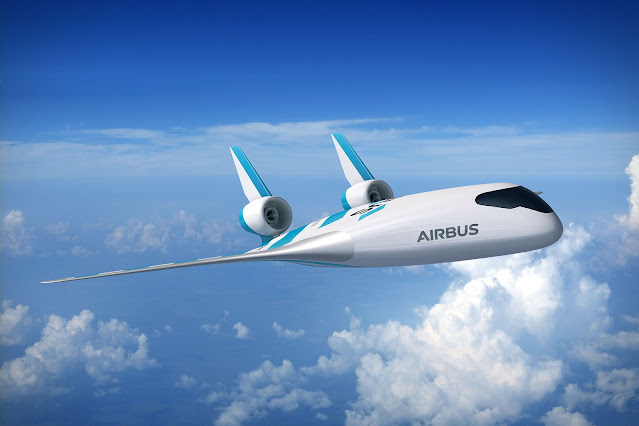Hydrogen Aircraft Revolutionizing Aviation With Clean Energy
 |
| Hydrogen Aircraft |
Hydrogen Aircraft represent a promising and revolutionary development
in the aviation, offering a potential solution to the environmental challenges
posed by conventional fossil fuel-powered aircraft. By utilizing hydrogen as a
clean energy source, these aircraft have the potential to significantly reduce
carbon emissions and mitigate the impact of air travel on climate change.
The
fundamental principle behind these aircraft lies in using hydrogen gas as a
fuel for propulsion. Unlike conventional aircraft, which typically rely on jet
fuel derived from petroleum, aircraft employ fuel cells or hydrogen-powered
combustion engines to produce thrust. Hydrogen, when used as a fuel, produces
only water vapor as a byproduct, making it a truly emissions-free alternative
to traditional aviation fuels.
According To Coherent Market Insights,
The Hydrogen
Aircraft Market Was Assessed At US$ 5.5 Billion In 2022, And From 2023 To
2030, It Is Expected To Increase At A Compound Annual Growth Rate (CAGR) Of
22.4%.
One
of the most notable advantages of Hydrogen
Aircraft is their significantly
lower carbon footprint compared to conventional aircraft. As global concern
about climate change grows, the aviation has come under scrutiny for its
substantial contribution to greenhouse gas emissions. Aircraft offer a
potential solution to this problem, as they do not release carbon dioxide or
other harmful pollutants during flight. By making the switch to hydrogen, airlines
and manufacturers can demonstrate their commitment to sustainability and play a
vital role in combating climate change.
Another
key advantage of aircraft is their potential for extended flight ranges.
Hydrogen has a high energy density, which means it can provide more energy per
unit of weight compared to traditional fuels. This characteristic enables
hydrogen-powered aircraft to achieve longer flight distances without the need
for frequent refueling. Longer flight ranges open up new possibilities for non-stop,
long-haul flights, reducing travel times and enhancing the efficiency of air
travel.
However,
Hydrogen Aircraft face several
challenges and obstacles that must be addressed to become a widespread reality
in commercial aviation. One of the primary hurdles is the production and
storage of hydrogen. While hydrogen is abundant in nature, it is primarily
found in combination with other elements, necessitating energy-intensive
processes to produce pure hydrogen. Additionally, hydrogen has a low density as
a gas, requiring specialized and lightweight storage systems that can be safely
incorporated into aircraft designs.
Electrified
Regional Aircraft: Larger Electric
Aircraft specifically designed
for regional travel, connecting nearby cities or airports. These aircraft use
advanced electric propulsion systems, which, when coupled with improvements in
battery technology and aerodynamics, can extend their range and reduce
operational costs compared to traditional regional planes powered by fossil
fuels.
There
are infrastructure challenges to consider. Developing a comprehensive hydrogen
refueling network is essential to support the widespread adoption of Hydrogen Aircraft. Currently, the
existing infrastructure is heavily reliant on conventional fuels, and
transitioning to hydrogen will require significant investment and cooperation
between governments, airlines, and fueling companies.


Comments
Post a Comment